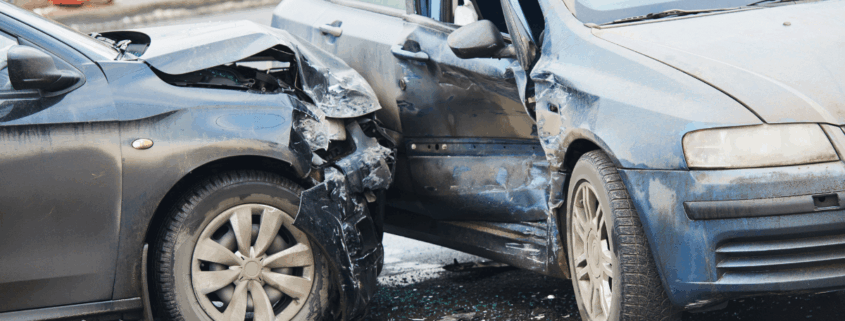How Much Can You Get for a Soft Tissue Injury from a Bourbonnais Car Crash?
The jolt of a car accident is often just the beginning. In the moments that follow, you might feel shaken but relieved, thinking you’ve escaped serious harm. Days or even weeks later, however, a persistent ache in your neck, a deep throb in your back, or a sharp pain in your shoulder tells a different story. These are the hallmark signs of a soft tissue injury, one of the most common yet frequently misunderstood consequences of a vehicle collision in Bourbonnais, IL, or other Kankakee County communities.
While these injuries don’t involve broken bones, their impact on your life can be significant, affecting your ability to work, care for your family, and enjoy daily activities.
Soft tissue injuries, a frequent outcome of accidents like car crashes, are often misunderstood and underestimated. While a broken bone is a clear and undeniable injury visible on an X-ray, soft tissue injuries involve damage to the body’s non-bony structures: the muscles, ligaments, and tendons. These crucial connective tissues act as the body’s internal support system, enabling movement, stability, and protection for our skeletal framework. Unlike a fracture, which is an immediate, obvious, and often a singular event, soft tissue injuries can be more complex, subtle, and their full impact might not be immediately apparent.
Understanding the Different Types of Soft Tissue Injuries
The term “soft tissue injury” is a broad category that encompasses several distinct types of damage. Sprains occur when ligaments are stretched or torn. Ligaments are tough, fibrous bands of connective tissue that link bones to other bones, providing stability to joints. A common example is a sprained ankle, which happens when the ligaments supporting the joint are injured.
Strains, on the other hand, involve muscles or tendons. Tendons are the cords that connect muscles to bones, and strains happen when they are overstretched or torn. A classic example is a hamstring strain, which occurs when the muscle is pulled or torn during physical activity.
A particularly common and serious soft tissue injury, especially in car accidents, is whiplash. This happens when a sudden, violent jolt forces the head to snap back and forth, damaging the muscles, tendons, and ligaments in the neck and upper back. The pain from whiplash can radiate into the shoulders and arms and lead to long-term issues like chronic headaches and reduced range of motion.
The Challenge of Diagnosis and Recovery
One of the biggest challenges with soft tissue injuries is their diagnosis. Since they don’t show up on a standard X-ray, doctors must rely on physical examinations, patient symptoms, and sometimes more advanced imaging like an MRI to get a clear picture of the damage. This lack of visible evidence can lead to skepticism, particularly from insurance adjusters who might downplay the severity of the injury. They may argue that without a fracture, the injury is minor, but this couldn’t be further from the truth for those who experience it.
The pain from a severe soft tissue injury can be excruciating and debilitating. It can limit your ability to perform daily tasks, work, and enjoy hobbies. Moreover, the recovery process is often lengthy and requires dedicated physical therapy, rest, and pain management. If not treated properly, these injuries can lead to chronic pain, reduced flexibility, and a higher risk of re-injury.
In short, while they may not involve broken bones, soft tissue injuries are a serious and legitimate form of physical trauma that can significantly impact a person’s quality of life. The pain is real, the recovery can be long, and they should never be dismissed as a minor consequence of an accident.
Common Types of Soft Tissue Injuries from Bourbonnais, IL Car Accidents
The sudden impact of a collision in Bourbonnais can cause a wide range of soft tissue damage. Some of the most frequently seen injuries after a car wreck include:
- Whiplash: This is a neck injury caused by a forceful, rapid back-and-forth movement of the neck, like the cracking of a whip. It is especially common in rear-end collisions. Whiplash can damage the ligaments and muscles in the neck, causing pain, stiffness, and headaches.
- Sprains: A sprain is the stretching or tearing of ligaments, the tough bands of fibrous tissue that connect two bones together in your joints. Wrist, knee, and ankle sprains are common in car accidents as drivers and passengers brace for impact.
- Strains: Often called a “pulled muscle,” a strain is an injury to a muscle or a tendon (the tissue that attaches a muscle to a bone). Back and shoulder strains are particularly prevalent due to the twisting motions that occur during a crash.
- Contusions (Bruises): A contusion is a deep bruise caused by a direct blow to a part of the body, which crushes underlying muscle fibers and connective tissue without breaking the skin. You may develop contusions from hitting the steering wheel, dashboard, or door.
- Tendonitis: This is the inflammation or irritation of a tendon. The force of an accident can cause tendons in the shoulder, elbow, or knee to become inflamed, leading to persistent pain and tenderness.
- Bursitis: Bursae are small, fluid-filled sacs that cushion the bones, tendons, and muscles near your joints. A traumatic impact can cause these sacs to become inflamed, resulting in a painful condition known as bursitis.
How Are Settlement Amounts for Soft Tissue Injuries Calculated?
There is no simple “calculator” that can spit out a precise settlement amount for a Bourbonnais soft tissue injury claim. Every case is unique, and the final compensation depends on a careful evaluation of the specific damages you have suffered. The calculation generally involves adding up your quantifiable economic losses and then assigning a value to your non-economic losses.
- Economic Damages: These are the straightforward, out-of-pocket financial losses resulting from your injury. They form the foundation of your claim’s value.
- Non-Economic Damages: These damages are more subjective. They are meant to compensate you for the physical pain, emotional distress, and loss of quality of life caused by the injury.
Insurance companies often use a formula, multiplying the total economic damages by a certain number (typically between 1.5 and 5) to arrive at a value for non-economic damages. The multiplier used depends heavily on the severity of the injury and the other factors discussed below.
What Factors Influence Your Settlement Value?
Several key elements will determine how much compensation you can reasonably expect for your soft tissue injury. A successful claim requires providing detailed evidence related to each of these points.
- The Severity and Extent of Your Injuries: A mild strain that resolves in a few weeks will have a lower value than a severe whiplash injury that causes chronic pain and requires months of physical therapy.
- Total Medical Bills: This includes all costs associated with your treatment, such as emergency room visits, doctor’s appointments, diagnostic imaging (MRIs, CT scans), physical therapy, chiropractic care, and prescription medications.
- Proof of Lost Wages: If your injury prevented you from working, you can claim compensation for the income you lost. This requires documentation from your employer detailing your rate of pay and the time you missed. If your ability to earn a living in the future is affected, that may also be factored in.
- The Duration of Your Recovery: A longer and more difficult recovery period generally leads to a higher settlement value, as it reflects a more significant impact on your life.
- The Impact on Your Daily Life: Can you no longer play with your children, participate in hobbies, or perform household chores without pain? This “loss of enjoyment of life” is a major component of your non-economic damages.
- The Strength of the Evidence: The quality of your documentation is vital. This includes your medical records, photos of your vehicle and injuries, and witness statements. Clear proof connecting the accident to your injury strengthens your position.
- The At-Fault Party’s Degree of Negligence: If the other driver was exceptionally reckless—for example, driving under the influence or texting while driving—it can sometimes influence the final settlement.
Why Are Bourbonnais Soft Tissue Injury Claims Often Challenged by Insurance Companies?
Insurance adjusters are trained to minimize payouts, and they often target soft tissue injury claims. Because these injuries are not as visually obvious as a broken bone on an X-ray, adjusters may use several tactics to devalue your claim.
- Arguing the Injury is Pre-Existing: The adjuster might scour your medical history to find any previous mention of back or neck pain and claim your current condition is not related to the car accident.
- Questioning a “Gap in Treatment”: If you did not seek medical attention immediately after the accident, the insurance company will argue that you could not have been seriously hurt. It is important to get checked out by a doctor as soon as possible, even if you do not feel significant pain right away.
- Claiming Over-Treatment: The insurer may argue that the physical therapy or chiropractic care you received was excessive or unnecessary for the type of injury you sustained.
- Making a Lowball Offer Quickly: Sometimes, an adjuster will offer a small settlement very soon after the accident, hoping you will accept it before you realize the full extent of your injuries and medical costs.
What Steps Should You Take to Protect Your Rights After a Soft Tissue Injury?
The actions you take in the days and weeks following a Bourbonnais car crash are very important for both your health and your potential legal claim.
- Seek Immediate Medical Attention: Your health is the top priority. Getting a medical evaluation right away creates an official record that documents your injuries and links them directly to the accident. Some local medical facilities to consider include Riverside Healthcare Bourbonnais Campus at 300 Riverside Drive and St Mary’s Hospital at 500 W. Court St in nearby Kankakee.
- Follow Your Doctor’s Orders: Attend all follow-up appointments, go to every physical therapy session, and take all prescribed medications. Failing to follow your treatment plan can be used against you by the insurance company.
- Document Everything: Keep a detailed file of all your medical bills, receipts for out-of-pocket expenses, and records of your missed time from work. It is also helpful to keep a daily journal describing your pain levels and how the injury is affecting your life.
- Preserve Evidence: Take photos of the damage to both vehicles and any visible bruises or injuries you have. If there were witnesses, get their contact information.
- Be Careful When Talking to Insurance Adjusters: Avoid giving a recorded statement to the other driver’s insurance company without first speaking to an attorney. Adjusters may ask leading questions designed to get you to downplay your injuries or inadvertently accept some fault.
Navigating the Legal Process for a Bourbonnais Car Accident Claim
The aftermath of a car accident in Bourbonnais can be overwhelming, especially when you are dealing with the physical pain of a soft tissue injury and the emotional weight of the situation. Understanding the legal process is essential to protecting your rights and pursuing the compensation you deserve. While the steps involved may seem daunting, having a clear understanding of what to expect can help you approach each stage with confidence.
Here are some of the key phases of a Bourbonnais car crash claim:
Initiating the Claim
The first formal step in seeking compensation is to notify the at-fault driver’s insurance company of your intent to file a claim. This notification is often done through a written notice or a phone call, and it sets the legal process in motion. It is important to provide accurate and detailed information about the accident, as any discrepancies could be used to challenge your claim later. Early notification also helps preserve evidence that might otherwise be lost over time. Keeping a record of all communications with the insurance company can provide valuable support in case of disputes.
Building Your Settlement Demand Package
Once your claim has been initiated, your attorney will collect all relevant evidence to build a strong case. This includes obtaining medical records, billing statements, accident reports, and photographs of injuries and vehicle damage. Witness statements and expert opinions may also be gathered to demonstrate the extent of your losses. The settlement demand package serves as the foundation for your negotiation with the insurer; it lays out the facts of the accident and provides a comprehensive account of your damages, both economic and non-economic. A well-prepared package can significantly improve your chances of a favorable outcome.
Negotiating with the Insurance Adjuster
After submitting the settlement demand package, negotiations with the insurance adjuster begin. This phase can be complex, as adjusters are trained to minimize payouts and may offer a settlement that falls short of what you need to cover medical bills, lost wages, and pain and suffering. Your attorney will advocate on your behalf, carefully reviewing each offer and providing counterarguments supported by the evidence. Patience and persistence are key, as negotiations can take time to reach a fair resolution. It is not uncommon for initial offers to be much lower than what is ultimately achieved through determined negotiation.
Filing a Lawsuit and Preparing for Litigation
While most car accident claims are resolved through settlement, sometimes the insurance company refuses to make a fair offer. In these situations, filing a lawsuit may be necessary to pursue the compensation you deserve. The litigation process involves several steps, including discovery, depositions, and possibly a trial. Your attorney will prepare and present your case, ensuring that all legal requirements are met and advocating for your best interests in court. Although litigation can be lengthy and complex, it may be the most effective way to secure the outcome you need when negotiations fail.
Successfully navigating a car accident claim after suffering a soft tissue injury involves prompt and thorough action at every stage, from notifying the insurer to potentially taking your case to court.
Work with a Seasoned Bourbonnais, IL Car Crash Attorney
The aftermath of a car accident is a difficult time. You should be focused on your physical recovery, not on fighting with an insurance company. A soft tissue injury can bring significant pain and financial strain, and you should not have to bear that burden alone. Holding the responsible party accountable is a key step toward getting your life back on track.
If you have suffered a soft tissue injury in Bourbonnais or anywhere in Kankakee County or the greater Chicagoland area, taking prompt action is essential. Contact the Fotopoulos Law Office today at 708-942-8400 for a free consultation. We can assess your case, explain your legal options, and provide the dedicated representation you need to pursue the fair compensation you are owed.










Leave a Reply
Want to join the discussion?Feel free to contribute!